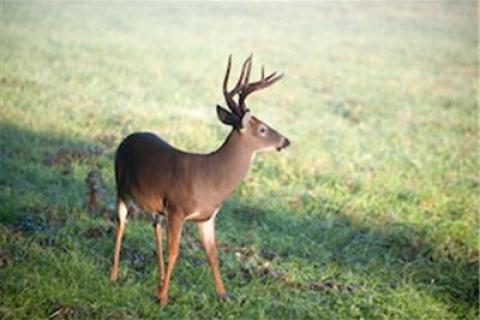

It’s almost hunting season, and that means it’s time to clean your gun, overhaul your supplies and spruce up your treestand. We’ve put together three types of rub-signs that could help you bag that trophy buck.
September means bucks are entering the pre-rut, and that means they’ll be leaving rubs on trees in their territory. Reading the rub—a portion of a tree where a buck runs its antlers over bark, leaving it discolored—is a key skill for hunters hoping to harvest a buck.
According to some studies, bucks may make up to 800 rubs in a season—leaving you many clues as how to take them down.
Here are at least three things a rub can tell you about the buck you’re stalking.
The Buck’s Size
Just how big is the buck you’re tracking? The location and size of the rub likely points to the answer. A general, intuitive rule of thumb: The higher the rub appears on the tree, the more mature the buck. Only use this logic on fresh rubs in the fall with no snowpack. Snow can affect your reading because it can affect the height of the rub giving you a false reading.
Additionally, a broader rub can indicate the width of the rack. For example, you find a rub in a cluster of trees. Be sure to look around adjacent the main rub at the other trees and shrubs for sign such as broken branches. This type of disturbance can tell you how wide a buck’s rack is.
The Buck’s Maturity
A rub’s color can also give you a hint about a buck’s maturity. If you see a combination of light and dark colored rubs on (light are new and gray weathered are older), you may have found a constant route favored by a mature buck. A darker color, though, could mean that it’s been rubbed over and over again over several years by a very mature—and large—buck.
The Buck’s Travel Pattern
Knowing whether the buck is large and mature is enticing. But it doesn’t necessarily help you track it. This tip will, though: knowing the position of rub on a tree with respect to whether you’re on an incline or flat terrain. If staring up an incline, for example, a rub on a tree facing you was likely rubbed in the morning; the opposite is true while staring down an incline. Why? Because the buck likely made the rub while leaving or arriving at their bedding site, which are typically positioned amid higher ground.
In flat ground, the principle holds true. Rubs that face a buck’s bedding site in the woods were likely made in the morning, and vice versa.
Use these rub-reading tips, and you’ll be on your way to a getting your next trophy buck in no time.
- 3472 views

